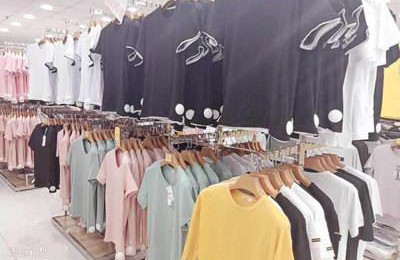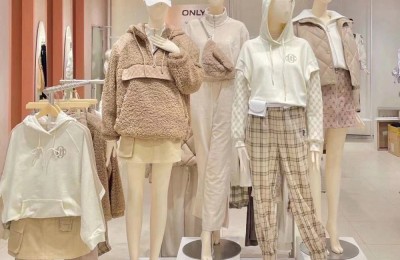According to China News Service’s report on August 1, the U.S. Federal Reserve announced on the 31st that it would lower the federal reserve funds interest rate to a range of 2%-2.25%. This is the first time the Federal Reserve has cut interest rates since December 2008. Why did the Fed cut interest rates this time? Will it have any impact on the textile industry?
The United States’ “sheep shearing” failed! Cutting interest rates to boost the weak economy
Cutting interest rates can provide more sufficient liquidity for the market. In layman’s terms, it is a means to boost the economy. When does the economy need a boost? Naturally, it is a time of weakness.
In May this year, the United States suddenly increased tariffs by 25% on $200 billion worth of exports to China, causing an uproar around the world. Some analysts pointed out that this is a very obvious “sheep-shearing” behavior. This was also done to Japan in the 1980s and 1990s. In the end, the Japanese economy bubbled and has never recovered. But China is not Japan, nor is it a vassal of the United States. China has strong national power and independent decision-making capabilities.
“The destruction of the Six Kingdoms was caused not only by military disadvantages, but also by bad fighting and bribing Qin.” Su Xun enumerated this view thousands of years ago in “On the Six Kingdoms”. Therefore, in the face of the unreasonable demands of the United States, China cannot compromise. Compromising will only allow the other side to make further progress, and it can only fight back.
Then the question is, as a financial country, the status of the U.S. dollar is even greater than that of the country itself.
I learned in high school politics class that capitalism itself has irreconcilable contradictions due to its profit-seeking and lagging characteristics. Therefore, every once in a while, the United States will inevitably experience problems in the capital market. If there is a certain amount of turmoil, it will turn into an economic crisis if it gets serious.
According to past situations, the United States generally uses the dollar’s voice to “shear its sheep” and transfer its own risks to the world, thereby achieving a smooth transition.
But this time the “scissors” of the United States were pointed at China. As an independent and powerful country, China also launched a resistance. The financial risks of the United States were not passed on in time. Then The economy can only be boosted through other methods, and the Fed’s interest rate cut is a “limited and effective” method (after all, the interest rate only has this amount in total, and it will be gone after all the cuts). During the financial crisis in 2008, the United States relied on interest rate cuts to get through it.
If there are enough orders, do we still need to cut interest rates?
For textile companies, this year is a very difficult year. After experiencing good market conditions last year, the market suddenly became so deserted this year, and everyone did not get used to it. One of the reasons for this is the overcapacity of water-jet looms, but more importantly, it is indeed a reduction in overall market demand.
The person in charge of a large textile company with more than a thousand looms revealed that last year their production and sales could reach 100%, but this year’s inventory has reached 7 to 8 million, and has even exploded. The most important reason is that clothing companies have placed fewer orders, and fabric manufacturers have also reduced their orders a lot.
The person in charge of another fabric company also said that in July this year, many small clothing companies that they had cooperated with in the past did not even place an order because they could not place an order. Know who to sell to.
It can be seen that the number of orders given by clothing brands to enterprises this year has been greatly reduced compared with previous years.
In addition, during the visit, although many textile companies do not have direct export trade to the United States, the final destination of many of their products after production and processing is still the United States, and not only Because of the $200 billion tariff, even some products that are not included in the tariff list have experienced a sharp decline in export volume.
Combined with the above news about the Federal Reserve’s interest rate cut, it can be said that the main reason for the sluggishness of the textile industry this year is the sluggish overall economic environment, and the decline in exports of clothing and fabrics. , causing the demand for end-use clothing to shrink significantly, and the increase in water-jet loom production capacity has made this sluggish market even worse.
What impact will interest rate cuts have on the textile industry?
The exchange rate has fallen sharply, but we must beware of the risk of a correction
The first and most direct impact of the Fed’s interest rate cut These are some macroeconomic fluctuations, among which the one most closely related to textile people is the exchange rate.
.
On August 1, the spot exchange rate of RMB against the US dollar fell below the 6.91 mark at the opening to 6.9150. This opening price was higher than the previous day’s closing price.�� depreciated by 295 basis points, but the spot exchange rate subsequently recovered some of its losses and once regained the 6.90 mark.
The falling exchange rate is temporarily good news for foreign trade companies, but they must also beware of the risk of future exchange rate corrections.
The weak situation of foreign trade orders is difficult to change in the short term
Federal Reserve Chairman Powell said that this interest rate cut is not the beginning of a long-term interest rate cutting cycle , but another rate cut is likely. The market is bearish on expectations for this interest rate cut, and the benefits have been overdrawn in advance when the news was released.
In addition, it will take a certain amount of time for the effect of interest rate cuts to be transmitted to the real industry, and the recovery of the economy requires long-term transmission of funds. In terms of foreign trade orders, the weak situation may not change much in the short term.
China-U.S. trade relations may maintain the status quo
China-U.S. trade negotiations have lasted a long time, and there has been a lot of fighting and talking. times, there has never been a definite result.
The United States unilaterally believes that the rise of China is a very serious threat to them, and the “America First” tone of US President Trump is not conducive to the trade relations between the two countries. China has also been sending tough signals. In the 12th round of talks, neither China nor the United States seemed to have any intention of making concessions.
The editor determines from this that Sino-US trade relations may maintain the current tense status quo for a relatively long period of time.
The 12th round of Sino-US trade negotiations on July 31 did not reach a very good result. The US market The risks for textile foreign trade companies are still relatively high, and the current round of interest rate hikes by the Federal Reserve may have a small boost to the economy and release a certain amount of economic vitality. If the economic situation worsens further, the possibility of continuing to cut interest rates cannot be ruled out, but The specific extent to which the impact of interest rate cuts can be transmitted to the level of textile foreign trade orders remains to be verified. </p







